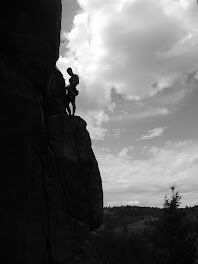While in China we had the opportunity to stop at a Ming Tomb. According to Wikipedia these are:
The Ming Dynasty Tombs (Chinese: 明十三陵; pinyin: Míng shísān líng; lit. Thirteen Tombs of the Ming Dynasty) are located some 50 kilometers due north of urban Beijing, in the People's Republic of China at a specially selected site. The site was chosen by the third Ming Dynasty emperor Yongle (1402–1424), who moved the capital of China from Nanjing to the present location of Beijing. He is credited with envisioning the layout of the ancient city of Beijing as well as a number of landmarks and monuments located therein. After the construction of the Imperial Palace (the Forbidden City) in 1420, the Yongle Emperor selected his burial site and created his own mausoleum. The Ming tombs of the 13 emperors of the Ming Dynasty were located on the southern slope of Tianshou Mountain (originally Mount Huangtu).’
This was one of my favorite stops on our tour. I feel that the pictures I took there better illustrate our experiences at the
Tombs.





































The Ming Dynasty Tombs (Chinese: 明十三陵; pinyin: Míng shísān líng; lit. Thirteen Tombs of the Ming Dynasty) are located some 50 kilometers due north of urban Beijing, in the People's Republic of China at a specially selected site. The site was chosen by the third Ming Dynasty emperor Yongle (1402–1424), who moved the capital of China from Nanjing to the present location of Beijing. He is credited with envisioning the layout of the ancient city of Beijing as well as a number of landmarks and monuments located therein. After the construction of the Imperial Palace (the Forbidden City) in 1420, the Yongle Emperor selected his burial site and created his own mausoleum. The Ming tombs of the 13 emperors of the Ming Dynasty were located on the southern slope of Tianshou Mountain (originally Mount Huangtu).’
This was one of my favorite stops on our tour. I feel that the pictures I took there better illustrate our experiences at the
Tombs.











































































